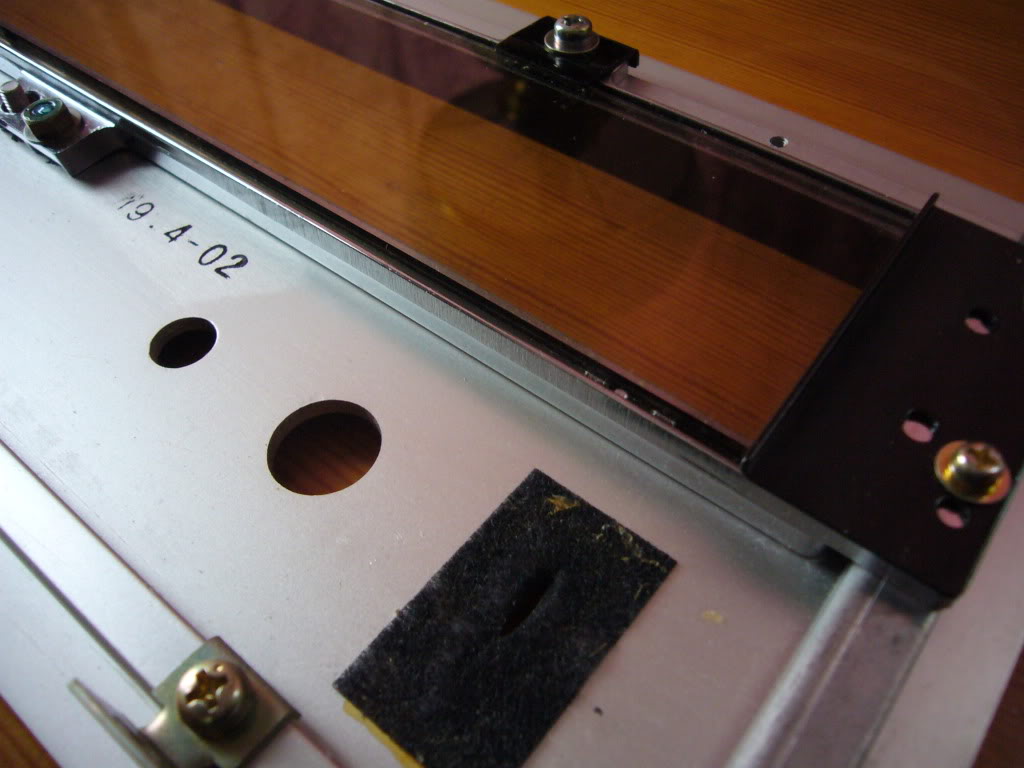Hi Guys
Well recent experience with having to get a tuner fixed (thanks to Rodney Hanna, and for freewhat a guy), provided me with a fair bit of knowledge as to how the front fascias of a particular make of tuner, are put together. So armed with this knowledge I have been tackling a problem that seems so far to be mainly with one brand (details later) only(at least so far its only been this brand). "What is this problem ?" I hear you ask...well dirt behind the tuning scale. Theres nothing worse than the soft glow of VU meters and display, being ruined by copious amounts of dirt, dust, hairs
, and thirty years of use (with no cleaning).
So suitably annoyed,at a much less than spotless display, and in possession of the skills to disassemble some of Japanese best Tuners I set to it.
What you will need to complete such a task (other than knowing what you are doing) is, a clean clear table top, with soft material top (to prevent scratching your pride and joy), good selection of screw drivers, cleaning tools including cotton wool buds,soft wide brush, cotton wool pads, tissue paper, Tesco Anti-Bacterial Multi-Surface Cleaner(fabulous at lifting dirt quickly, and so far has not caused and adverse reactions with any tuner I have cleaned)...oh yes good lighting conditions and a powerful torch (this will help you spot areas of glass that are still smeared.)
Firstly a warning...never assume that the material the tuning scale is applied to the glass is stable. It is entirely possible that this transfer, paint may flake or rub off. Clean round it carefully and never apply a fluid. I always clean the area the scale is on (so far always on the revers of the glass display) dry..its better to be safe rather than sorry...just ask Tony L of PFM (I read a tuner thread over there some time ago, were he [I think]while cleaning damaged a tuning scale). Its okay to use fluid to clean the top surface but ensure none gets onto the back.
With the tuner on, the amount of crap visible completely ruined the look of this tuner (? just wait all will be revealed). After removing the Tuning knob, selector knob, switch tops and headphone knob I was able to remove the fascia. Luckily the switch tops just popped off by hand and the knobs securing crub screws all unscrewed easily. Once removed (three screws holding it in place on the top, and three on the bottom ) the amount of crap was clear, as you can see in the two photos below.
I used a cotton bud and soft brush to remove all the dirt from the metal work. It was not too hard to remove, but quite a lot was trapped under the glass, and behind it. This particular tuner has two layers of glass covering the tuning scale. The main display glass was smeared both on the front and back. With the fascia removed I cleaned both the metal work and glass, back and front with Tescos fluid, applied by a cotton pad and bud (this to apply soft pressure to remove stubborn stains). With this particular tuner, and some other models in this brands past you must watch out not to dampen the velvet strips which sit over the slots for the switches. They may come off if you get them damp. If this happens Copydex glue will work to re-stick it down. This removed the dirt and smears, after drying I placed it in a plastic bag which I sealed (this to keep new dust off).
Note velvet damping pads, which surround the slots the switches poke through.
With the fascia clean, and bagged, I had to remove the metal bands that help hold the glass tuning scale in place. With those removed the rubber slots which hold/damp the scale, prized gently from the top edge came loose, allowing access to clean both sides of the scale.
You can see the dirt collected on the tip of the cotton bud (done dry)

After quite a long period of careful cleaning the scale was also placed in a bag which I sealed.
I then turned my attention to the metal work which sits behind the glass. As its black, it shows the dirt up badly. I damp cleaned the VU meter glass, being careful not to apply too much fluid. I then dusted the metal work and tuning arm slot.
You can see the Stereo indicator and the right side display illuminator lamp (it looks like a fuse. These fail a lot)
Everything was now ready to re-assemble the display. This was done quickly to minimise new dust build up. First the glass tuning scale, then the main fascia. This needs to be lined up carefully, to avoid scratching or damaging the control knob shafts and switch shanks. Lining it all up and making sure the headphone socket goes into its hole, is a little tricky but once done it screws back together quickly. Leave the screws slightly loose so you can check fascia alignment, once checked/done tighten it all up. The last thing to do is reattach the bottom and top plates, making sure to leave no gap along the top edge of the fascia and lid.
The Sony 5130 Tuner fascia and various knob and switch tops.

The reassembled SONY 5130....Magic
So one more Tuner in for test has its identity revealedmore to follow really soon.
Regards D S D L
No part of this text or photos can be reproduced without written permission. Copyright of both belongs to NK.

















 Reply With Quote
Reply With Quote
 Originally Posted by barry.d.hunt
Originally Posted by barry.d.hunt


